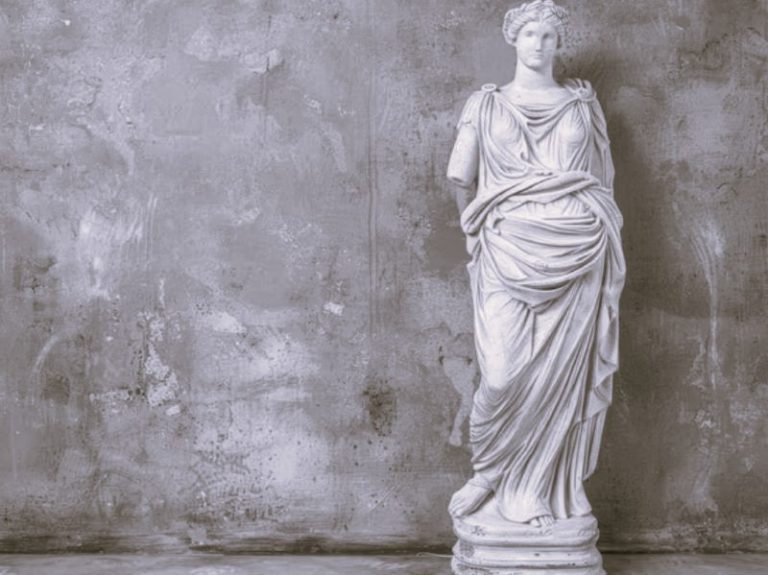

Language has always played a significant role in the artistic expression of cultures around the world. For certain artists, the act of blending ideas with visual forms and translating them into words is considered a means of creating art as well.
In the context of contemporary Chinese art, language has emerged as a powerful tool for exploration, social commentary, and identity formation. From calligraphy to text-based installations, Chinese artists have harnessed the unique properties of language to convey their ideas, challenge norms, and engage in a dialogue about the complexities of their society.
Let’s delve into the fascinating world where language meets art in contemporary Chinese art!
Calligraphy in Chinese Art
Chinese calligraphy, with its rich history of over two thousand years, has been a source of inspiration for countless artists.
In China, calligraphy has been considered as one of the highest forms of art and its mastery was thought to reveal the artist’s effort and ingenuity. Rooted in tradition, calligraphy holds a special place in Chinese culture, reflecting the beauty of the written word.
Throughout Chinese history, calligraphy was not only used as a means of written communication but has also been used as an instrument of social control and social cohesion among the political and cultural elite of Chinese literati and while the appreciation for it may have died by the end of the 19th century and the collapse of the Chinese empire, avant-garde artistic movements in the 70s and 80s have successfully revived it with the help of master calligraphers in the country.
From there, contemporary Chinese artists have moved beyond traditional calligraphy and use various forms of script to explore new artistic possibilities. They experiment with stylized characters, fragmented text, and even invented scripts to challenge the conventional understanding of language. The ideas of “Abstract art” mixed with calligraphy became the modern reinterpretation leading to new appreciation in the artistic field.
Most critics argue that in order to truly comprehend this expressionist art, one must learn Mandarin or familiarize themselves with it. They assert that the combination of Mandarin characters gives rise to meaning and coherence. However, this belief was challenged by the calligrapher BAI Qianshen, who successfully crafted eight formal Chinese characters that were completely unreadable. Building on this notion, WU Shanzhuan further pushed the boundaries of artistic expression by creating Red Humor, an artwork that cleverly juxtaposes nonsensical phrases derived from the mass cultural language. Through their pioneering works, these contemporary artists ultimately demonstrate that art is boundless and can exist with or without meaning.
Language as Social Commentary and Critique
Another use of language among contemporary Chinese artists was to use it as a means to critique and comment on social and political issues.
They use text-based artworks to address topics such as censorship, identity, globalization, and consumerism. One should learn that despite Mandarin being the official language of China, it is technically a version of one of the many Chinese dialects throughout the country. As such, artists often use different dialects incorporated in their slogans, phrases, or symbols creating a powerful visual metaphor that will resonate with their audience and offer profound reflection on the challenges and changes happening in China and the world.
One great example is the installation art created by contemporary artist Ai Weiwei on the façade of the Haus der Kunst. The art was constructed from nine thousand children’s backpacks spelling out the sentence “She lived happily for seven years in this world” in Chinese characters quoted from a mother whose child died in a school that collapsed during the 2008 earthquake in Sichuan.
The installation art was strategically placed on the museum’s façade, ensuring that it caught the attention of every individual who entered through the front door. This deliberate choice aimed to provoke curiosity amongst the visitors, compelling them to unravel the profound meaning behind the characters displayed. By encouraging people to inquire into the context and understand the significance of the characters, either by their own or with the help of a native Chinese speaker, the installation sought to etch the memory of the earthquake’s victims deep within their hearts.
Language and Global Dialogue
Alongside the increasing globalization, the role of language in contemporary Chinese art also takes on a global dimension.
The Chinese diaspora and the interactions between Chinese artists and the international art community have shaped the language-based artworks in diverse and exciting ways. Artists may incorporate multiple languages, merge Chinese characters with Western alphabets, or explore the interactions between different linguistic systems.
One great example is the art created by artist Xu Bing called “Square Word Calligraphy”. Xu Bing used printing and calligraphy background and arranged English letters in squares to make the words look like Chinese characters, yet remain legible to the English speaker. Square Word Calligraphy revolutionizes the concept of translanguaging by creating a captivating hybrid form of calligraphy. Through the act of physically tracing the alphabet alongside the character, observers are transported into an immersive translingual adventure.
Xu Bing’s creations and similar related works from other artists not only bridge cultural gaps but also raise questions about cultural identity, translation, and the universality of human experiences.
The Future of Language in Chinese Art
As Chinese art continues to evolve, the role of language will undoubtedly evolve with it.
Artists will further experiment with new technologies, explore the relationship between language and other art forms, and challenge traditional notions of communication. Language will remain a potent tool of expression, allowing Chinese artists to navigate the complexities of their society, engage in global dialogues, and push the boundaries of contemporary art.
In conclusion, the role of language in contemporary Chinese art is multifaceted and dynamic. It serves as a vehicle for social commentary, a bridge between cultures, and a source of inspiration for artistic exploration. This fusion of language, art, and culture in contemporary Chinese art represents a captivating journey of innovation, tradition, and self-expression.






